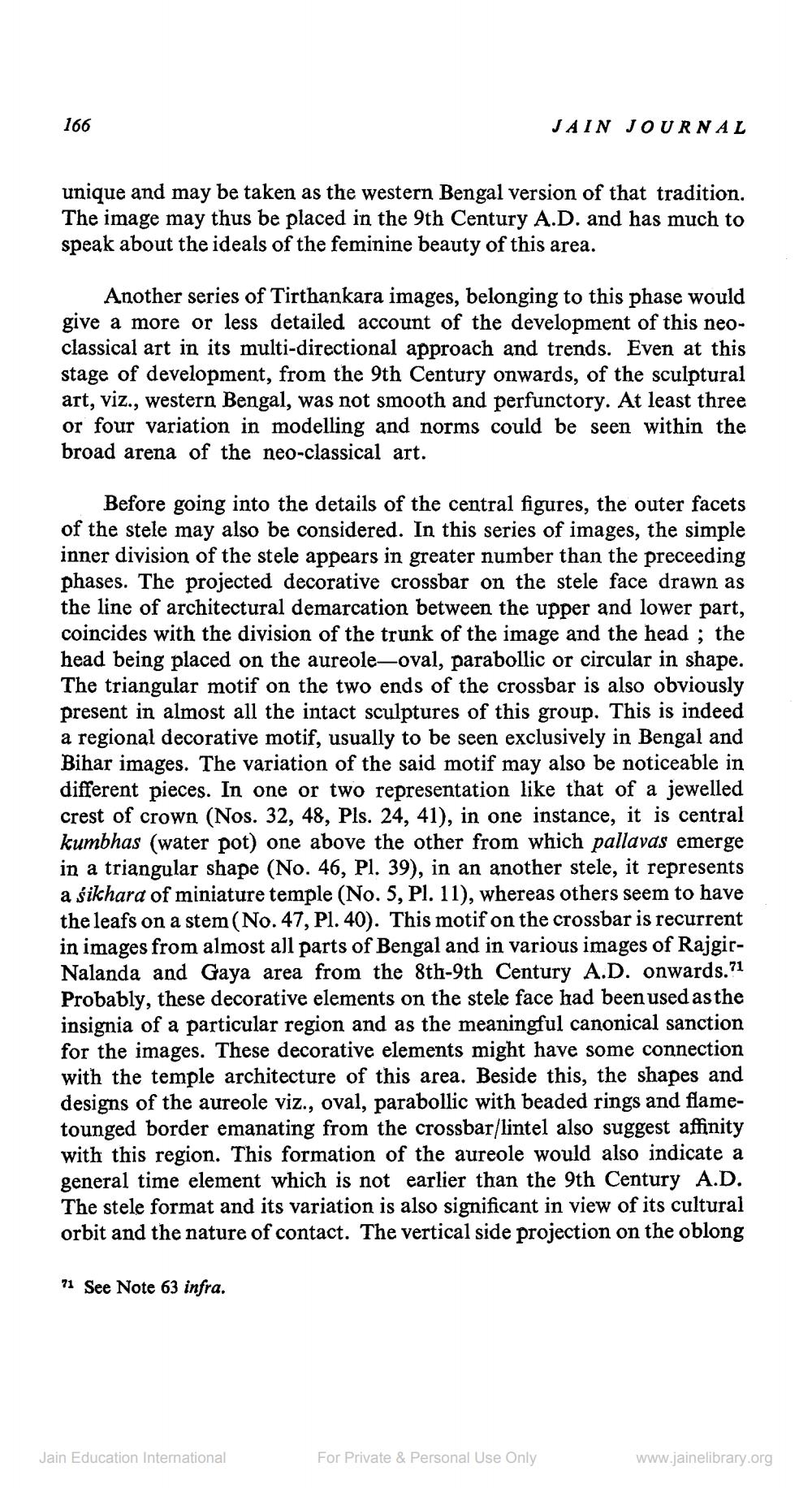________________
166
unique and may be taken as the western Bengal version of that tradition. The image may thus be placed in the 9th Century A.D. and has much to speak about the ideals of the feminine beauty of this area.
JAIN JOURNAL
Another series of Tirthankara images, belonging to this phase would give a more or less detailed account of the development of this neoclassical art in its multi-directional approach and trends. Even at this stage of development, from the 9th Century onwards, of the sculptural art, viz., western Bengal, was not smooth and perfunctory. At least three or four variation in modelling and norms could be seen within the broad arena of the neo-classical art.
Before going into the details of the central figures, the outer facets of the stele may also be considered. In this series of images, the simple inner division of the stele appears in greater number than the preceeding phases. The projected decorative crossbar on the stele face drawn as the line of architectural demarcation between the upper and lower part, coincides with the division of the trunk of the image and the head; the head being placed on the aureole-oval, parabollic or circular in shape. The triangular motif on the two ends of the crossbar is also obviously present in almost all the intact sculptures of this group. This is indeed a regional decorative motif, usually to be seen exclusively in Bengal and Bihar images. The variation of the said motif may also be noticeable in different pieces. In one or two representation like that of a jewelled crest of crown (Nos. 32, 48, Pls. 24, 41), in one instance, it is central kumbhas (water pot) one above the other from which pallavas emerge in a triangular shape (No. 46, Pl. 39), in an another stele, it represents a sikhara of miniature temple (No. 5, Pl. 11), whereas others seem to have the leafs on a stem (No. 47, Pl. 40). This motif on the crossbar is recurrent in images from almost all parts of Bengal and in various images of RajgirNalanda and Gaya area from the 8th-9th Century A.D. onwards.?1 Probably, these decorative elements on the stele face had been used as the insignia of a particular region and as the meaningful canonical sanction for the images. These decorative elements might have some connection with the temple architecture of this area. Beside this, the shapes and designs of the aureole viz., oval, parabollic with beaded rings and flametounged border emanating from the crossbar/lintel also suggest affinity with this region. This formation of the aureole would also indicate a general time element which is not earlier than the 9th Century A.D. The stele format and its variation is also significant in view of its cultural orbit and the nature of contact. The vertical side projection on the oblong
71 See Note 63 infra.
Jain Education International
For Private & Personal Use Only
www.jainelibrary.org




